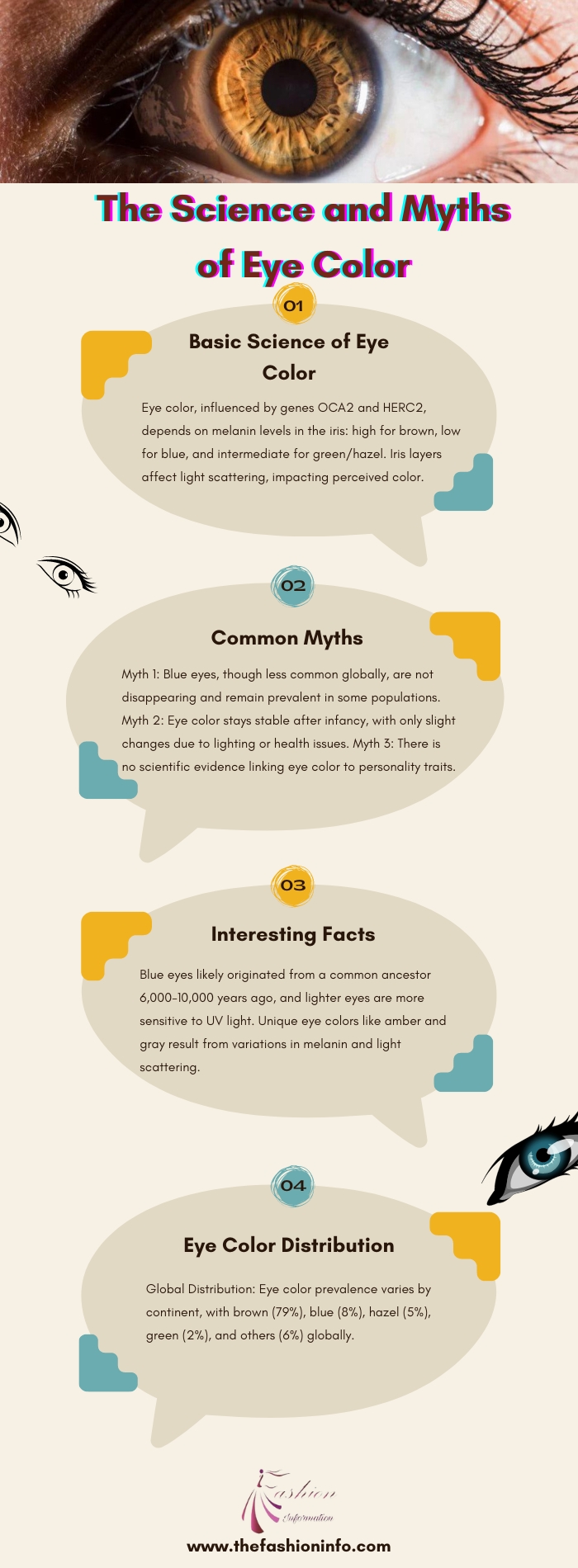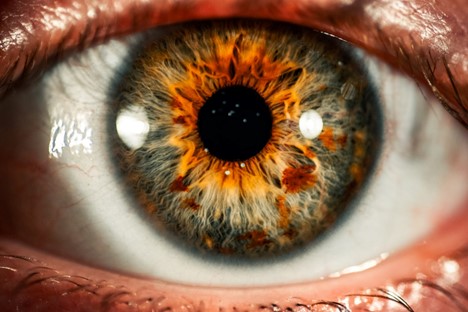The human eye, often referred to as the window to the soul, is how you perceive yourself and others. But there’s more to eye color than meets the eye. Beyond simply being aesthetically pleasing, the colors of our irises carry stories of our past, intricate scientific details, and enduring legends that have fascinated humankind for ages.
Whether you’re curious about the genetic mysteries behind eye color or eager to unravel the cultural myths that have shaped our perceptions, this exploration promises to be both enlightening and captivating.
Table of Contents
The Basics of Eye Color
The color of the eyes is determined by the amount and distribution of melanin pigment in the iris, which is primarily controlled by genetic factors. This hereditary trait is influenced by multiple genes, resulting in a diverse range of eye colors observed in human populations.
Common eye colors include brown, blue, green, and hazel, each with variations and combinations that contribute to the unique appearance of individuals. Understanding the basics of eye color involves recognizing the intricate interplay of genetic factors that dictate inheritance patterns and contribute to the diversity of ocular shades seen in different people, including hazel eyes.
Also Read: 7 Things You Should Follow For Better Sleep
Understanding Melanin and Eye Color
Melanin, a pigment produced by melanocytes, is pivotal in determining the coloration of skin, hair, and eyes. In the iris, the type and quantity of melanin dictate eye color, with greater concentrations yielding darker hues.
Among the main types of melanin, eumelanin, and pheomelanin, variations contribute to the diverse array of eye colors seen across individuals.
Genetic Determinants of Eye Color
Eye color inheritance is governer by polygenic inheritance, which means it is influenced by multiple genes, each exerting varying degrees of dominance. Key genes involved in eye color determination include OCA2, HERC2, and TYRP1, with variations in these genes resulting in different eye colors.
The intricate interplay between these genes, which regulate melanin production and distribution, contributes to the diverse range of eye colors observed across human populations.
Also Read: Asthma: Types,Causes,Symptoms And Treatment
Dispelling Myths Surrounding Eye Color
Throughout history, various myths and misconceptions have surrounded eye color, often attributing it to supernatural or mystical origins. One common myth is that eye color is determine by dominant and recessive traits, with blue eyes considered recessive and brown eyes dominant. While there is some truth to this notion, the inheritance of eye color is far more complex than a simple dominant-recessive model.
Another prevalent myth is that eye color can change based on mood or emotion. While it’s true that lighting conditions and pupil dilation can affect the perception of eye color, the underlying pigmentation remains constant throughout an individual’s life.
Also Read: Erectile Dysfunction: Treatment And Causes
The Fascination with Rare Eye Colors
While brown eyes are the most common eye color worldwide, rare colors such as green, gray, and hazel eyes hold a special allure for many people. Part of this fascination stems from their scarcity, as these colors are less prevalent in the general population. Additionally, rare eye colors often evoke a sense of mystery and uniqueness, adding to their appeal.
Conclusion
Also, the study of eye color is a multifaceted endeavor that encompasses genetics, culture, history, and evolution. From the ancient myths surrounding eye color, the understanding of eye color continues to evolve, revealing the intricate tapestry of factors that shape this fundamental aspect of human diversity.
Infographic: The Science and Myths of Eye Color


